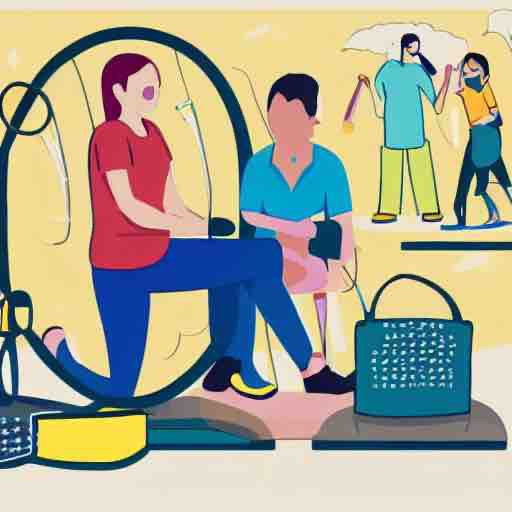I'm Aoi Hashima , an occupational therapist who works in Saga Sumai and Fukuoka .
Yesterday, I wrote about the effects of sensory disturbances.
" The Effects of Sensory Disorders "
Sensory impairment after stroke , especially the difficulty of understanding touch in the superficial sense and the sense of limb movement in the deep sense, greatly affects the movement of the limbs.
In terms of rehabilitation, we provide support for people with sensory impairments, but compared with the rehabilitation of motor paralysis and walking, the rehabilitation of sensory impairments has many uncertainties, so we consider the content of rehabilitation according to the patient. i am practicing
This time, I wanted to write about the actual rehabilitation of sensory disorders.
Evidence of recovery from sensory disturbances after stroke
We will summarize the evidence for recovery from sensory impairment after stroke.
The Cochrane Library critically reviews the content of published papers and other publications and summarizes evidence for treatments and interventions.
I'm copying the Cochrane Library article on upper extremity sensory disturbances after stroke.
Intervention of upper limb sensory disturbance after stroke While there is insufficient evidence to draw conclusions about the effects of the interventions included in this review, three studies provide preliminary evidence that mirror therapy improves detection of warmth and pain, thermal stimulation interventions speed up sensory recovery and intermittent Pneumatic compression intervenes to improve tactile and motor sensations. A meta-analysis could not be performed due to the high clinical heterogeneity of interventions and outcomes. Author conclusion:
Although several interventions for post-stroke upper extremity sensory disturbances have been described, there is no evidence to support or refute them to be effective in improving participants' sensory disturbances, upper extremity function, or functional status and function. Better-designed and better-reported studies on sensory rehabilitation are needed. Doyle S , Bennett S , Fasoli SE , McKenna KT . Interventions for upper extremity sensory disturbances after stroke . Cochrane Database of Systematic Reviews , Issue 6 , 2010 . Art.
As only one case was listed in the Cochrane Library, we searched outside the Cochrane Library .
~ Rehabilitation of Sensory Dysfunction After Stroke - Scope Review (cited in abstract) ~ This article attempts to review and describe the current evidence on different approaches to the assessment and rehabilitation of sensory impairment after stroke. The results strongly suggest that primary and secondary motor areas are involved in somatosensory processing and responses, respectively. Rehabilitation methods are divided into sensory stimulation methods that use external stimuli and sensory reeducation methods that focus on relearning. However, their different goals and different ways of engaging interests can affect the applicability of the study. Consequently, a broader research need has emerged to assess sensory rehabilitation and evidence-based rehabilitation practices after stroke.
Dorcas BC Gandhi1 , Ivy Anne Sebastian2 and Komal Bhanot . Rehabilitation of sensory dysfunction after stroke - a scope review. Journal of Stroke Medicine 4(1) 25–33, 2021
From these two reports, we can see that each facility is trying various interventions, despite the lack of evidence for sensory impairment.
We also found insufficient evidence to support or refute the efficacy of rehabilitation practices for post-stroke sensory disturbances.
The question remains whether post-stroke sensory rehabilitation is more beneficial for motor and sensory recovery than conventional exercise therapy.
~ Somatosensory Disorders: A Randomized Controlled Trial of Early Recovery After Stroke~
For patients with sensorimotor impairment early in post-stroke recovery, arm movement therapy may improve movement impairment more than arm sensorimotor therapy. In these patients, sensorimotor therapy does not improve somatosensory function and may be less effective in motor recovery.
De Bruyn et al. Somatosensory Deficits: A Randomized Controlled Trial in the Early Rehabilitation Phase After Stroke. Frontiers in Neurology 2020
Sensorimotor therapy has been reported to be less effective than exercise therapy in early recovery after stroke.
When I read stories like this, I sometimes wonder how effective sensation-focused recovery support is.
Although it is my personal opinion, while supporting the recovery of patients with severe sensory impairment after stroke , we are also looking for support for sensory impairment, while providing support primarily through exercise. There are indeed many patients who recognize improvement, so I think it's important to provide support that matches the patient's feelings.
* Randomized controlled trial: A trial in which patients are grouped together using a method called randomization, such as a drawing of lots or a random number table, when comparing the effects of multiple treatments. The obtained results are highly reliable because the subjectivity of the researcher was not introduced into the grouping. (Quoted from the mind)
At the end
This time, I wrote about the actual rehabilitation of sensory disorders.
I think there is still very little information in the area of sensory disorders.
I will do my best to establish my clinical practice to provide better recovery support for those I may encounter in the future.
Citations / references
1) Doyle S , Bennett S , Fasoli SE , McKenna KT . Interventions for upper extremity sensory disturbances after stroke . Cochrane Database of Systematic Reviews , Issue 6 , 2010 . art pub2
2) Dorcas BC Gandhi1 , Ivy Anne Sebastian2 and Komal Bhanot . Rehabilitation of sensory dysfunction after stroke - a scope review. Journal of Stroke Medicine 4(1) 25–33, 2021
https://journals.sagepub.com/doi/pdf/10.1177/2516608520984296
3) De Bruyn et al. Somatosensory Deficits: A Randomized Controlled Trial in the
Early recovery phase after stroke . Frontiers in Neurology 2020
☆*:. 。 .Thank you for reading to the end . 。 .:*☆
ーーーーーーーーーーーーーーーーーーーーーーー
This article was reprinted on September 1, 2022 on Aoi Hashima's blog " Stroke Rehabilitation Longevity Consultation Center " .

